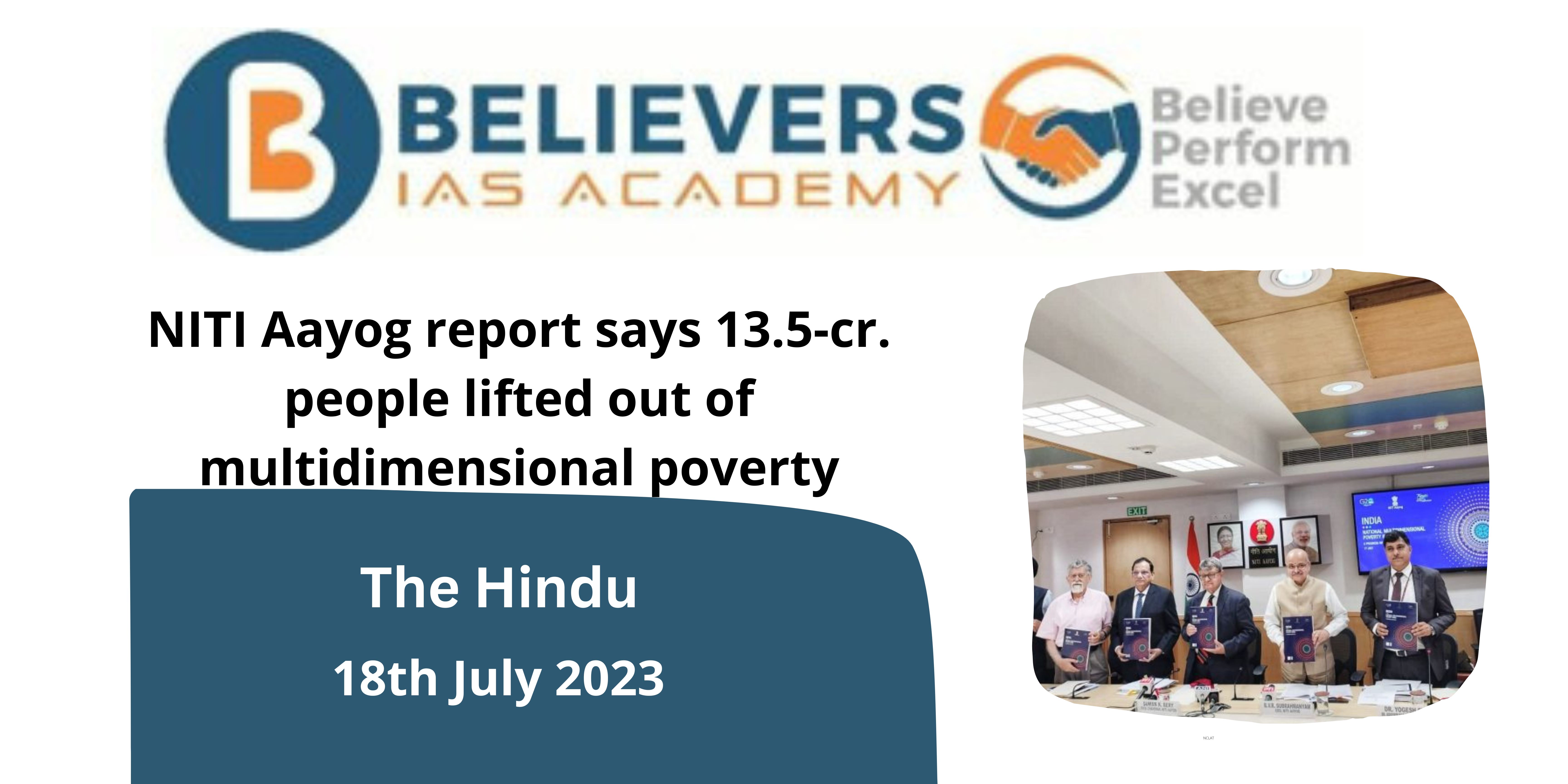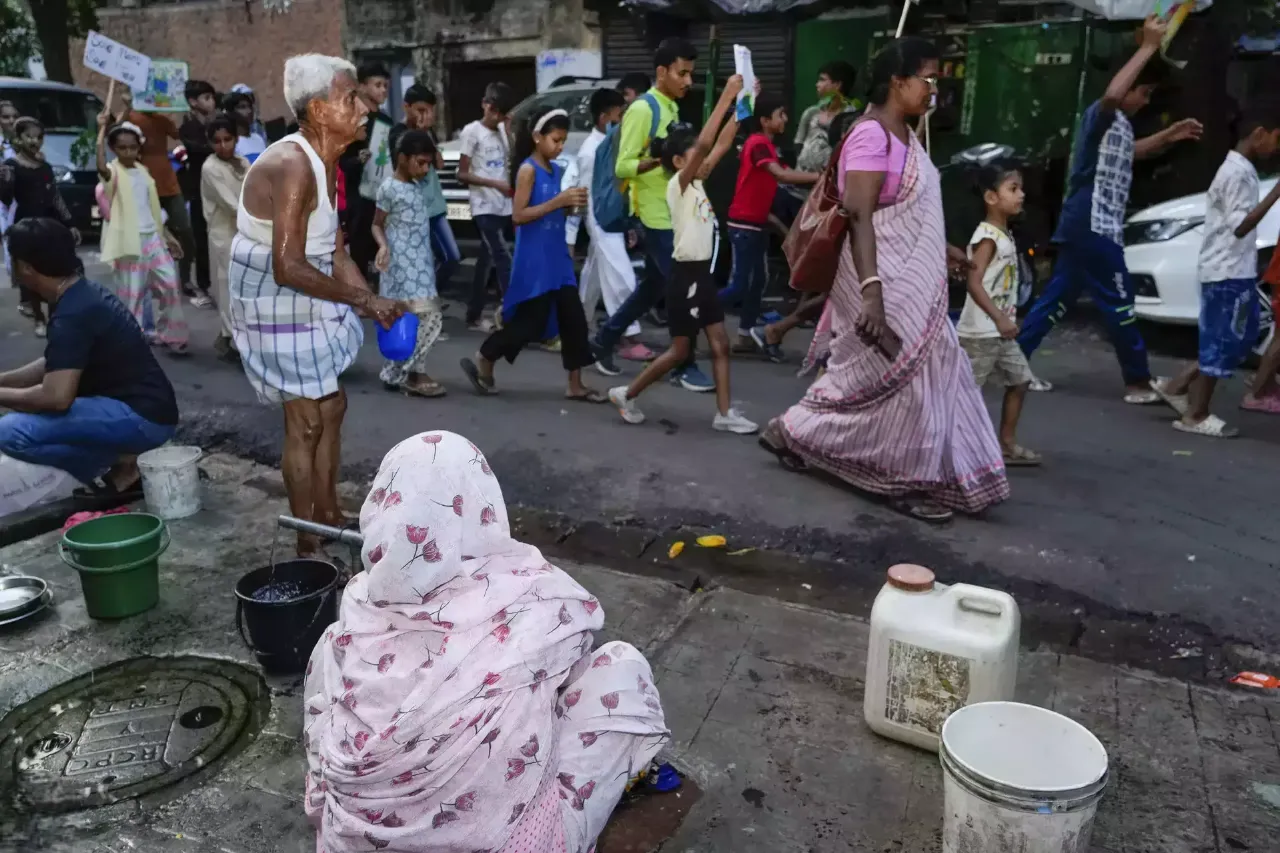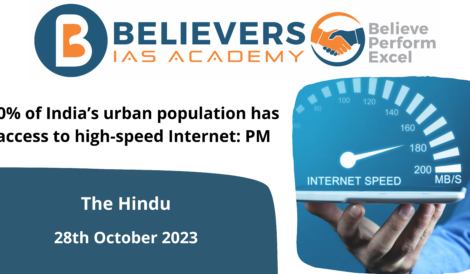NITI Aayog report says 13.5-cr. people lifted out of multidimensional poverty
Context:
According to the “National multidimensional poverty index: a progress review, 2023” report, which was released here on Monday by NITI Aayog, India has seen a considerable decrease in the number of multidimensionally poor people, who went from 24.85% in 2015–16 to 14.96% in 2019–21.
What is National Multidimensional Poverty Index ?
- The National MPI produced by the NITI Aayog is India’s equivalent of the Global Multidimensional Poverty Index.
- To assess the multidimensionality of poverty among the Indian masses, it employs the rigorous techniques used by the UNDP and the Oxford Poverty and Human Development Initiative.
- Health, education, and standard of life are the three equally weighted dimensions used by the MPI to measure deprivations. It uses 12 indicators that are in line with the SDGs, such as those related to nutrition, mortality rates, education levels, access to necessities, and financial inclusion.
What are the parameters of the Index?
- The report finds “acute deprivations in health, education, and standard of living” using criteria accepted by the United Nations.
- These criteria include housing, assets, bank accounts, cooking fuel, child and adolescent mortality, maternal health, years of education, school attendance, sanitation, drinking water, and electricity.
What are the initial findings from the report at a glance?
- Decline in Multidimensional Poverty: Multidimensional poverty in India has significantly decreased, falling by 9.89 percentage points from 24.85% in 2015–16 to 14.96% in 2019–21.
- Number of People Lifted out of Poverty: During the period covered by the report, about 13.5 crore (135 million) people were lifted out of multidimensional poverty.
What are the other findings of the report?
- Reduction of Poverty in Rural and Urban Areas: Poverty rates fell more quickly in rural areas, from 32.59% to 19.28%. Poverty dropped from 8.65% to 5.27% in metropolitan areas.
- Progress in Uttar Pradesh: With 3.43 crore (34.3 million) persons exiting multidimensional poverty, Uttar Pradesh saw the highest decrease in the number of people living in poverty.
- Fastest Reduction in Poverty: The proportion of multidimensional poor decreased most quickly in the states of Uttar Pradesh, Bihar, Madhya Pradesh, Odisha, and Rajasthan.
- MPI Value and Poverty Intensity: The MPI value practically decreased in half from 0.117 to 0.066, signifying substantial advancement. Poverty intensity dropped from 47% to 44%.
- Achieving SDG Target 1.2: India is on track to achieve SDG Target 1.2 of reducing multidimensional poverty by at least half well ahead of the 2030 deadline.
How was the government able to intervene and reduce the points?
- Governmental Initiatives: The government’s emphasis on just and sustainable development, together with its dedication to the SDGs, have helped to reduce poverty. The Poshan Abhiyan, Anaemia Mukt Bharat, Swachh Bharat Mission, Jal Jeevan Mission, Pradhan Mantri Ujjwala Yojana, Saubhagya, Pradhan Mantri Awas Yojana, Pradhan Mantri Jan Dhan Yojana, and Samagra Shiksha are some of the most important initiatives.
- Changes in Indicators: The health, education, and standard of living indicators, among the other 12 MPI characteristics, have all significantly improved.
What can be done further to eradicate the below Line poverty?
- Promoting economic activities: Encourage sustainable economic growth and the creation of jobs to increase employment possibilities and earnings. Governments, corporations, and non-governmental organizations (NGOs) can invest in infrastructure development, encourage small companies and entrepreneurship, and assist industries with the potential to generate employment.
- Improve skilled training: Increased emphasis on education and skill development is necessary to end the cycle of poverty. Everyone should have access to inexpensive education, especially in poor communities, as this can give them the information and skills they need to get better employment and enhance their standard of living.
- Ensure gender equality: Ending poverty requires empowering women and girls. Poverty reduction can be aided by addressing gender-based violence and discrimination, as well as ensuring that all people have equal access to healthcare, education, and employment opportunities.
- Enhance availability of basic facilities: Enhance access to clean water, sanitary facilities, and high-quality healthcare services to help people escape poverty. Improved productivity and well-being can result from spending money on healthy practices, disease prevention, and healthcare infrastructure.
- Increase agricultural productivity: For many individuals in developing nations, agriculture serves as their main source of income. Providing smallholder farmers with better access to tools, education, markets, and technology can increase agricultural output and lower rural poverty.





